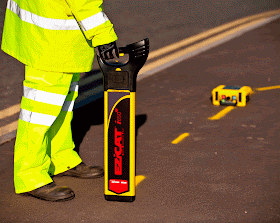BOOST Your Cable Locators Signal
Locating buried cables by a Cable Avoidance Tool (CAT or cable locator) works by detecting electromagnetic signals passing through the utility (cable or pipe).Where there is a weak or no signal present, the utility cannot be detected with just a cable. An artificial signal is applied to the utility to provide a detectable signal and improve the detection reliability. A signal generator (Genny) applies a signal to the utility, which the cable locator can detect.
The cable locator is set to the same signal mode as the genny. Commonly this is a 33 kHz signal, although other frequencies are also used with different characteristics and advantage depending on the site situation and application.
Boosting the Signal
Some applications may encounter a small diameter cable running in the ground, which on occasions may cause the signal from the signal generator to reduce in strength and become undetectable.
Some modern signal generators provide the option of increasing the signal frequency or increasing the signal power.
Cable Detection provides the ‘BOOST’ mode in their signal generators, increasing the energy transferred through the tracing utility above the normal level output. Where a 2x signal output results in 2x improvement in the CAT detected signal.
Cable Detection’s signal transmitters are available with increased output power setting controls, the T100 to a maximum of 1 Watt and T300 to a maximum of 3 Watt. The variable output power settings enable the operator to select the right level of signal boost for the site conditions, normally the power on "default level "is OK for most applications with good battery life and trace performance, rated at 100 mW, this is the common industry standard.
Where site conditions require increased performance the transmitter output setting can be increased to HIGH or BOOST levels, the site conditions for this might include greater tracing range, inducing a signal onto a deeper utility (where the efficiency is reduced) or where the cable impedance is high and low level of signal is present (small diameter cable).
Performance improvement
The performance of the combination between the cable locator and signal transmitter can be improved by increasing the signal frequency (131 kHz gives 4x improved signal over 33 kHz) or by boosting the power of the same signal x4 with T100 or x12 with T300.
It should also be understood that when increasing the signal frequency that the tracing signal will be increased but perhaps importantly the tracing range is reduced.
In comparison boosting the transmitter power delivers the same locating performance benefit and perhaps importantly for some users with the added benefit of the same tracing characteristics and increased range that may also be important.








